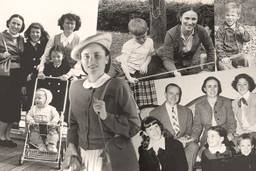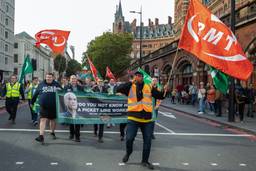On January 22, America celebrated the 30th anniversary of Roe v. Wade, the Supreme Court ruling establishing a woman’s right to make private, personal choices about abortion and childbirth. Yet 30 years later, the legacy of the procedure’s illegality—compounded by jeering protesters and anti-abortion legislators—still finds activists and providers on the defensive, protecting “choice” while sidestepping shrinking public support.
Even though a third of American women will have an abortion before age 45, according to the Alan Guttmacher Institute, the procedure remains highly stigmatized. Indeed, clinicians report patients continue to be stunned that reproductive health centers are clean, well-lit and professional. “When we talk to patients, what comes out 100 percent of the time is that they assumed we’d be judgmental and treat them negatively,” says Stacy James, CEO of InterMountain Planned Parenthood in Billings, Montana. “They are so pleased that we treat abortion as just another medical procedure, that we do not make them feel shame or guilt.”
It wasn’t always like this, say veterans of the battle to legalize abortion. Peg Johnston, president of the National Coalition of Abortion Providers (NCAP), blames the demise of consciousness-raising in the late ’70s for transforming feminist politics and undercutting organizing on a host of issues, including reproductive rights. Women had “the idea that we could and should sit at the table of power,” she says. “From there, it was a short hop to … ‘you can’t say that’ and ‘that idea won’t play on Capitol Hill.’ Real women were not informing the rhetoric anymore.”
Instead, “choice” became a code word, a way to address abortion without its connection to sexual activity. “Choice is a great slogan,” Johnston continues, “clean, ambiguous. Not that choice is wrong—it’s the essence of abortion—but it doesn’t encompass the nuance and struggle that goes into making the decision.”
Increasing comfort levels so that people can speak openly about abortion is imperative, NCAP says. “Women don’t use the word fetus,” says the group’s executive director, Ron Fitzsimmons. “They call it a baby. We think it’s OK for providers to use the language women use. We don’t have to apologize or dance around the terms.”
What’s more, everyone knows that pregnant women have three options—adoption, abortion or childbirth; all have their pros and cons. Yet when policy-makers discuss childbearing, it is always in glowing terms, as if health risks and postpartum depression are unworthy of mention. When laws mandate that states provide information to women considering their options, NCAP says, “we respectfully suggest that abortion not be singled out … as if it is the least desirable alternative.” Such presentation helps remove some of the procedure’s stigma.
In addition, NCAP is working to help women grapple with—and talk about—their emotions. “We need to recognize that people carry an emotional load about abortion,” Johnston says. “It is not realistic to assume that everyone who makes a decision will feel good about it. … Abortion is about the deficiencies of life—the lack of childcare, male support, housing and employment. We have to acknowledge this.”
A few brave souls have already jumped on this bandwagon. Bay Area resident Aspen Baker founded EXHALE—the country’s first “after-abortion counseling talk line”—in 2002. According to Baker, EXHALE’s 17 volunteers recognize that “abortion is a very big thing for a lot of women, and callers want to talk about it with someone who doesn’t have a political agenda. Some women are worried that they’ve ruined their chances of becoming a mother. Some are in stable relationships and already have children, but think that people won’t understand why they ended a pregnancy. Young women who don’t want to tell their parents and have no one else to talk to, call us. And men call. Some don’t know how to support their partners; others have their own feelings about the event. We counsel them all.”
EXHALE’s callers learn of the service while in the recovery rooms of Bay Area Planned Parenthood and NCAP-affiliated health centers. “The clinics love us,” says Baker. “They want to follow-up, but understand that patients often don’t want additional contact with them. They see that we’re helping to undo the stigma, the feelings of isolation and the fear of judgment that many women have.”
It is an enormous undertaking. “Our goal is to bring abortion into the mainstream as part of comprehensive reproductive health care,” says Planned Parenthood’s Stacy James. “Plus, we need to get our side comfortable standing up and defending abortion as a reproductive choice. We need to help people say that you can be a mommy, daddy, teacher, physician, rabbi, minister, imam or whatever and [still] support abortion.”
Even though a third of American women will have an abortion before age 45, according to the Alan Guttmacher Institute, the procedure remains highly stigmatized. Indeed, clinicians report patients continue to be stunned that reproductive health centers are clean, well-lit and professional. “When we talk to patients, what comes out 100 percent of the time is that they assumed we’d be judgmental and treat them negatively,” says Stacy James, CEO of InterMountain Planned Parenthood in Billings, Montana. “They are so pleased that we treat abortion as just another medical procedure, that we do not make them feel shame or guilt.”
It wasn’t always like this, say veterans of the battle to legalize abortion. Peg Johnston, president of the National Coalition of Abortion Providers (NCAP), blames the demise of consciousness-raising in the late ’70s for transforming feminist politics and undercutting organizing on a host of issues, including reproductive rights. Women had “the idea that we could and should sit at the table of power,” she says. “From there, it was a short hop to … ‘you can’t say that’ and ‘that idea won’t play on Capitol Hill.’ Real women were not informing the rhetoric anymore.”
Instead, “choice” became a code word, a way to address abortion without its connection to sexual activity. “Choice is a great slogan,” Johnston continues, “clean, ambiguous. Not that choice is wrong—it’s the essence of abortion—but it doesn’t encompass the nuance and struggle that goes into making the decision.”
Increasing comfort levels so that people can speak openly about abortion is imperative, NCAP says. “Women don’t use the word fetus,” says the group’s executive director, Ron Fitzsimmons. “They call it a baby. We think it’s OK for providers to use the language women use. We don’t have to apologize or dance around the terms.”
What’s more, everyone knows that pregnant women have three options—adoption, abortion or childbirth; all have their pros and cons. Yet when policy-makers discuss childbearing, it is always in glowing terms, as if health risks and postpartum depression are unworthy of mention. When laws mandate that states provide information to women considering their options, NCAP says, “we respectfully suggest that abortion not be singled out … as if it is the least desirable alternative.” Such presentation helps remove some of the procedure’s stigma.
In addition, NCAP is working to help women grapple with—and talk about—their emotions. “We need to recognize that people carry an emotional load about abortion,” Johnston says. “It is not realistic to assume that everyone who makes a decision will feel good about it. … Abortion is about the deficiencies of life—the lack of childcare, male support, housing and employment. We have to acknowledge this.”
A few brave souls have already jumped on this bandwagon. Bay Area resident Aspen Baker founded EXHALE—the country’s first “after-abortion counseling talk line”—in 2002. According to Baker, EXHALE’s 17 volunteers recognize that “abortion is a very big thing for a lot of women, and callers want to talk about it with someone who doesn’t have a political agenda. Some women are worried that they’ve ruined their chances of becoming a mother. Some are in stable relationships and already have children, but think that people won’t understand why they ended a pregnancy. Young women who don’t want to tell their parents and have no one else to talk to, call us. And men call. Some don’t know how to support their partners; others have their own feelings about the event. We counsel them all.”
EXHALE’s callers learn of the service while in the recovery rooms of Bay Area Planned Parenthood and NCAP-affiliated health centers. “The clinics love us,” says Baker. “They want to follow-up, but understand that patients often don’t want additional contact with them. They see that we’re helping to undo the stigma, the feelings of isolation and the fear of judgment that many women have.”
It is an enormous undertaking. “Our goal is to bring abortion into the mainstream as part of comprehensive reproductive health care,” says Planned Parenthood’s Stacy James. “Plus, we need to get our side comfortable standing up and defending abortion as a reproductive choice. We need to help people say that you can be a mommy, daddy, teacher, physician, rabbi, minister, imam or whatever and [still] support abortion.”
Eleanor Bader is a teacher and freelance writer from Brooklyn, N.Y. She is a frequent contributor to The Brooklyn Rail, RHRealityCheck.org, elevateddifference.org, ontheissuesmagazine.com and Truthout.








